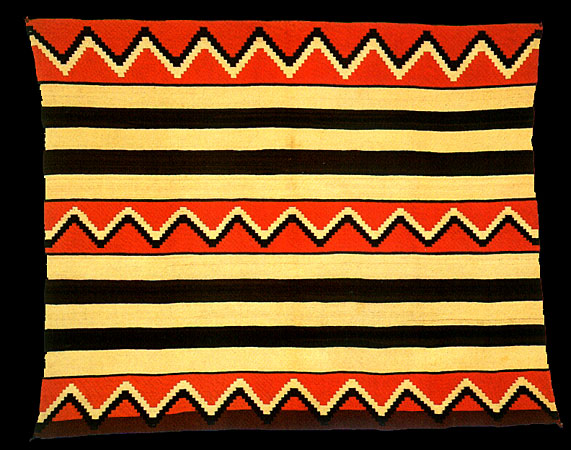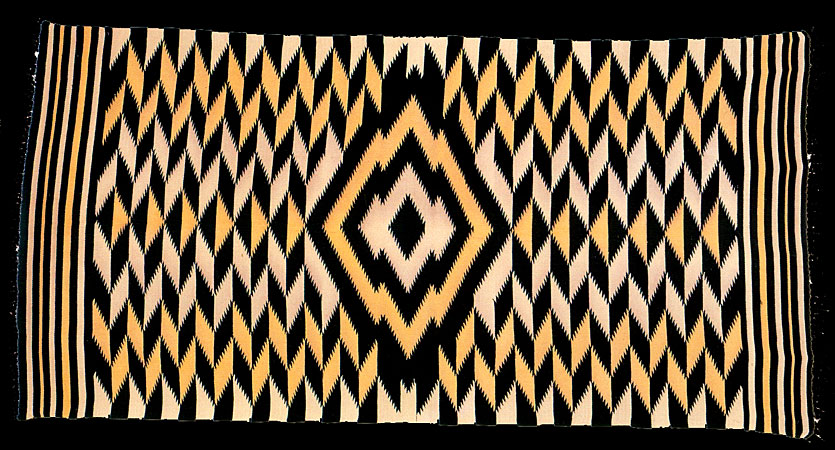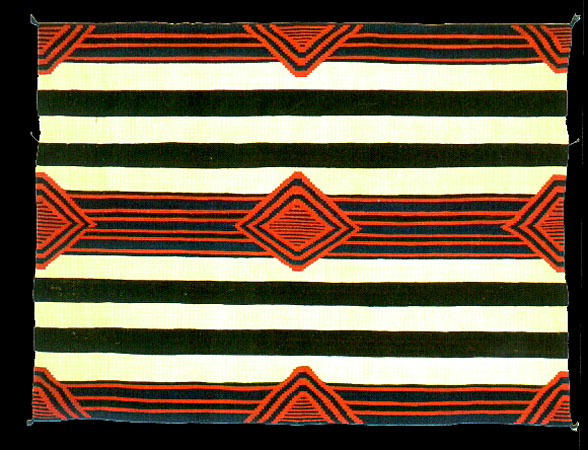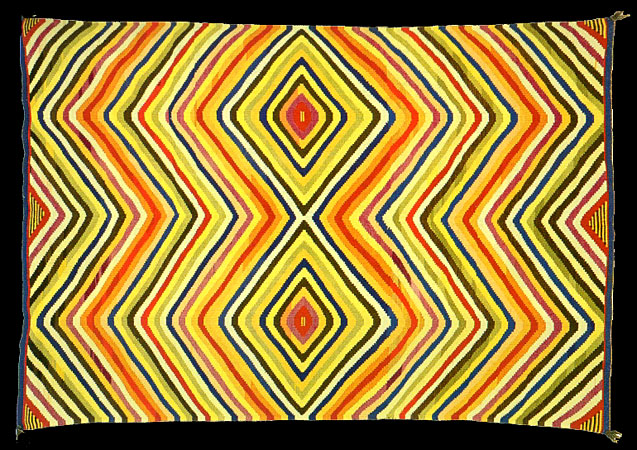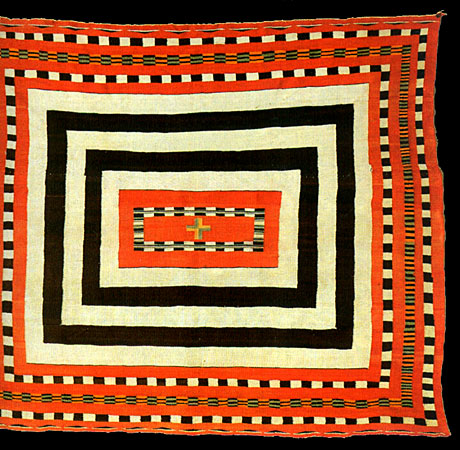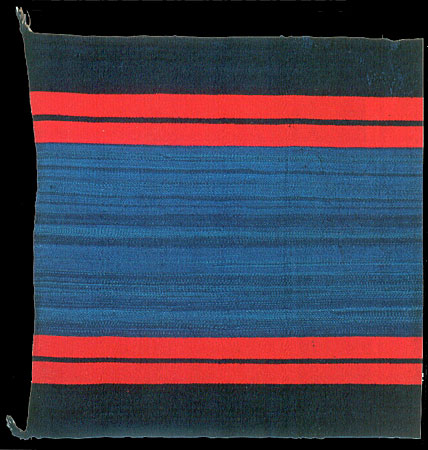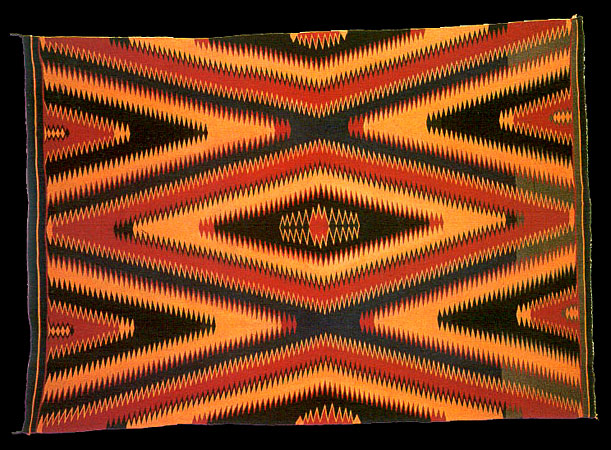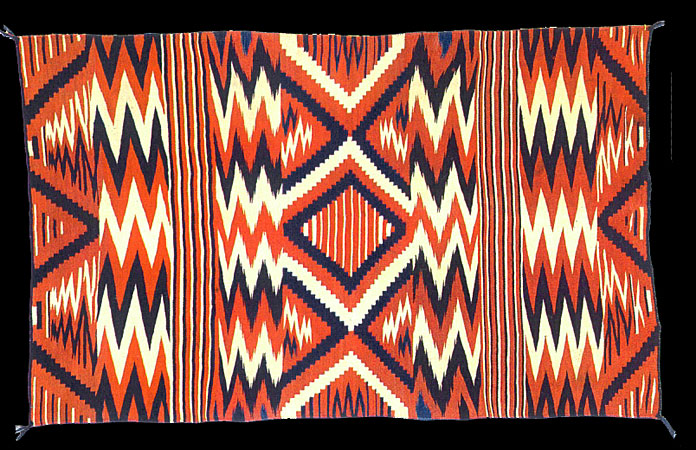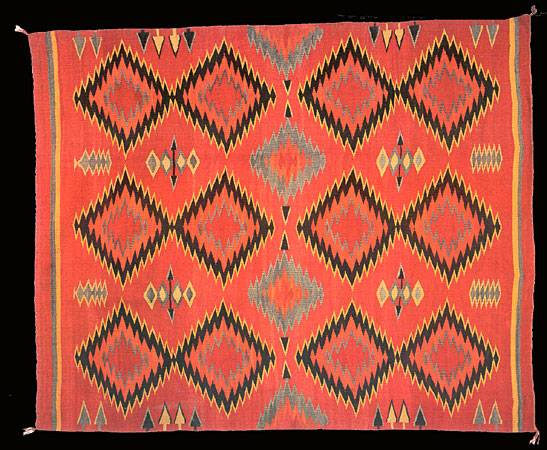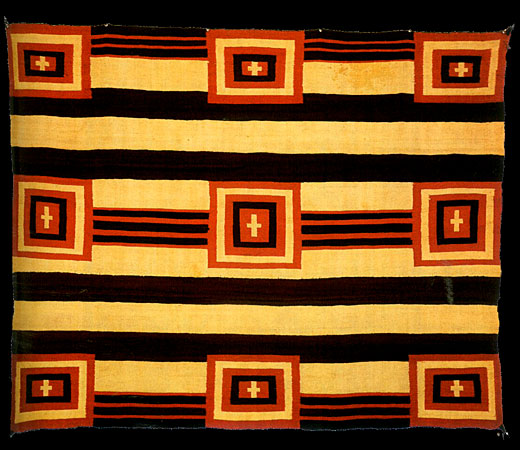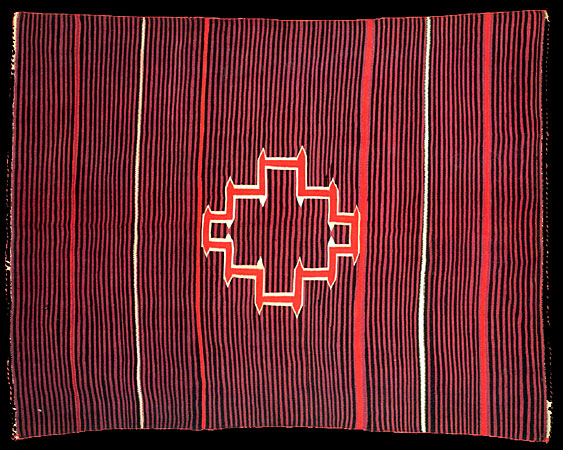Oriental Rugs Dictionary
Navaho
Navaho rugs have a tremendous visual impact, which reflects the strength of the Navaho culture and their tradition as people. Weaving designs evolved from simple beginnings in the 18 Century, and became more elaborate in response to changing demands during the second half of the 19 Century. Today, they have returned to a newfound simplicity. The method of weaving has remained virtually unchanged, and is basically the tapestry flat weave technique used in Middle Eastern kilims.
The Spanish introduced sheep into Old Navaho land near New Mexico in the 16 Century, and the nomadic Navaho acquired large flocks from them and became famous for the blankets that they wove for their own use.
During the complex history of banishment and then their return to a diminished territory, Navaho's weaving was influenced by many factors, including shortage of wool and weaving of their neighbors, the Pueblo.
When the Navaho first acquired their flocks, they spun the yarn from their own fleece, and they have returned to this today. During the intervening period, they bought commercial yarns that were available in a choice of strong, bright colors. Today's pieces are brightly colored, sturdy, and largely made up of stripes or diamond motifs. Unlike Middle Eastern works, individual Navaho wearers may become well known for the quality of their weaving and designs and a particular weaver's work can be more expensive than that of other wearers. The weaving is done by women who learn through a "watch and do" process.
For Navaho rugs in our inventory click here
